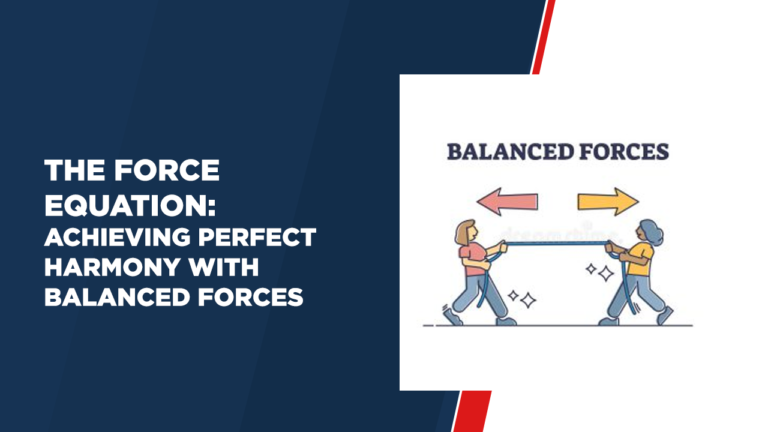The Force Equation: Achieving Perfect Harmony with Balanced Forces
Introduction
In physics, forces are the invisible hands that shape our world. From birds soaring high in the sky to leaves rustling in the wind, all motion is determined by forces acting on each other. Equilibrium and unbalanced forces hold an essential place in this regard and provide insight into the mechanics of motion and equilibrium.
Defining Balanced Force
At the core of motion is an understanding of balanced forces. A balanced force occurs when two or more forces acting on an object cancel each other out to form an equilibrium state, such that its speed or position remains constant or remains constant with time. When this delicate balance is present, both the magnitudes and directions of the opposing forces are perfectly matched, leading to steady progress or perpetual motion of an object. Mathematically, a balanced force can be represented as ΣF = 0, where ΣF represents the sum of all forces acting on an object.
Unveiling the Difference
Balanced forces can create equilibrium, but unbalanced forces present a completely different picture. Unbalanced forces occur when the total force on an object exceeds zero; These causes result in an object’s velocity to accelerate, decelerate or change in the direction of motion – unbalanced forces cause this. Unbalanced forces cause objects to speed up or slow down or to change their path completely.
Exploring Balanced Force Examples
Balanced forces are found everywhere. Consider a book on a table: gravity pulls it down while the equal and opposite force exerted by the table pulls it up, creating an example of balanced forces. A car traveling at a constant speed on a smooth road also exhibits a balanced force when its forward thrust is equal to the frictional resistance plus the air resistance, creating a balanced force scenario.
Achieving Harmony
Balanced forces represent harmony in physics. Just as in music when different tones blend seamlessly together, balanced forces provide the state of motion that produces harmony – this balance allows for predictability and control in a variety of scenarios.
Conclusion
There is a complex dance of forces at the core of what we are in our world; One that focuses on balanced forces. Recognizing and understanding this difference helps us to better understand how motion works from its underlying mechanics through stationary objects to vehicles with controlled motion; Solving force equations gives us a greater appreciation of the balance that governs this ever-changing world around us.



